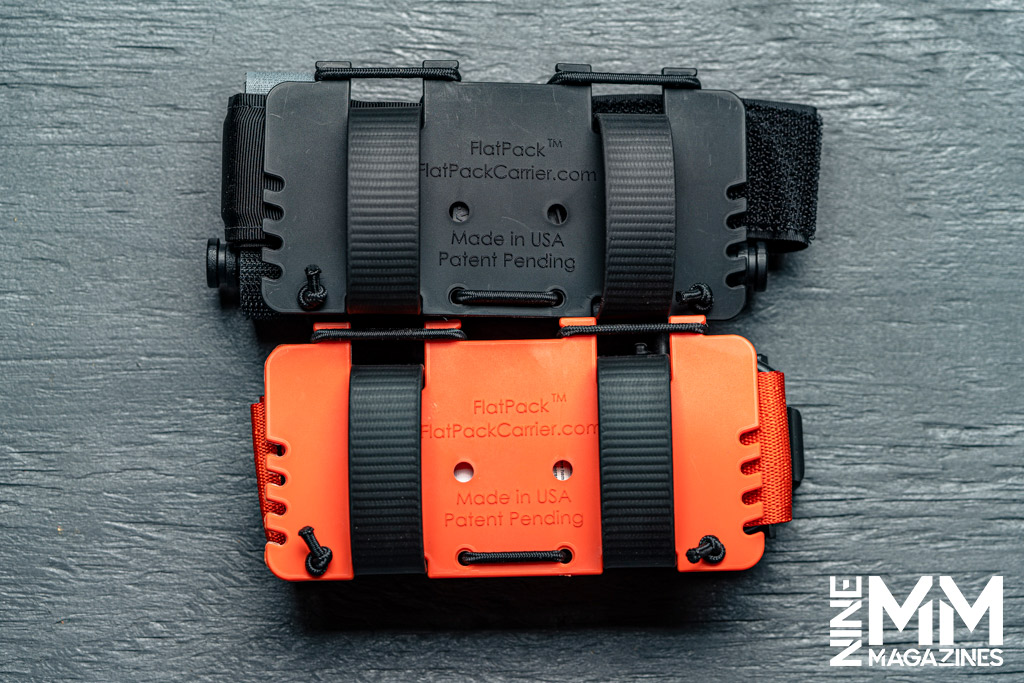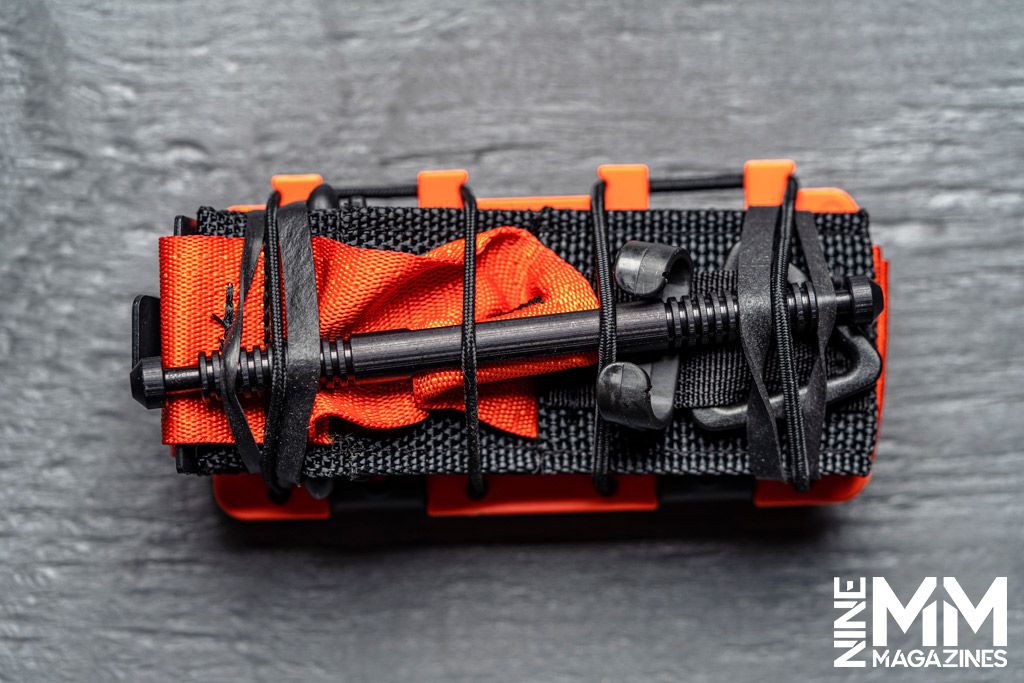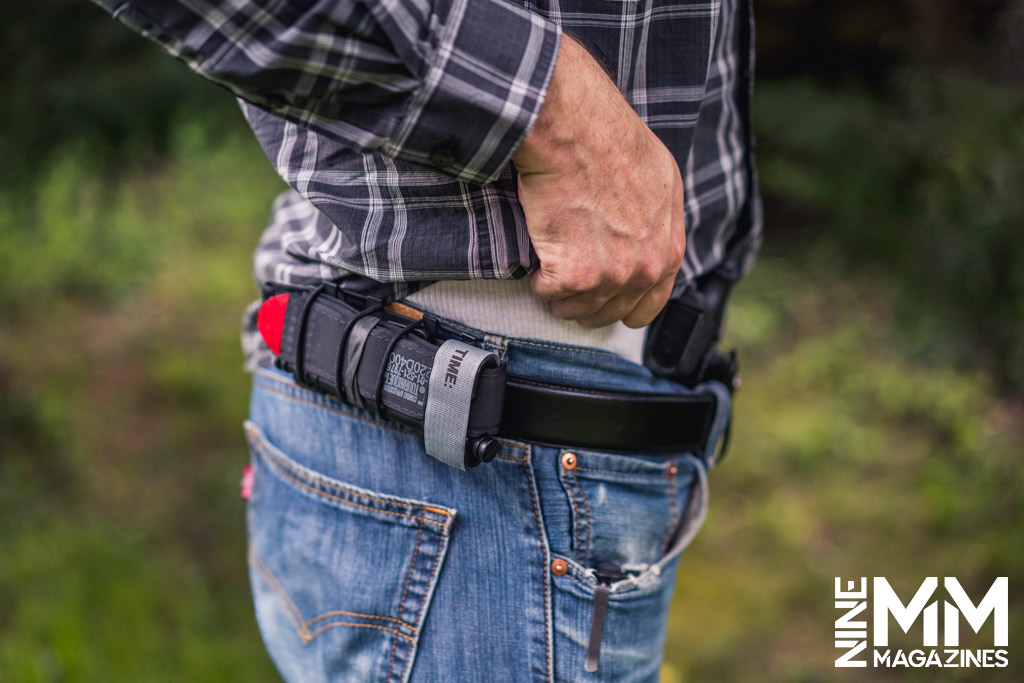
PHLster Flatpack Tourniquet Carrier Review
Disclaimer: This page contains affiliate links, meaning we receive commissions for any purchases made through the links on this page.
There was once a guy who needed a tourniquet, but he couldn’t find it, and…perhaps we won’t finish that story. Suffice to say, where and how you carry your tourniquet is crucial. If you own and carry firearms, you need to have a tourniquet easily accessible to you at all times. The PHLster Flatpack makes that goal a little bit easier.
Below, I’ll share a personal review of the PHLster Flatpack tourniquet carrier. I’ll discuss the benefits, the drawbacks, and if it’s worthy of your trust. You’ll find that the PHLster Flatpack is a well-thought-out option for carrying a tourniquet.
To kick things off, let’s start with a product overview.
PHLster Flatpack Tourniquet Carrier: Features & Functions

The PHLster (pronounced “fill-ster”) tourniquet carrier has three main parts: A molded polymer backboard, two belt loops attached with screws, and a small bungee-like cord, also known as shock cord.
How do you use the PHLster tourniquet holster? The tourniquet rests against the backboard, secured with the shock cord. Then, you can place it on your belt, weave it into a backpack, or remove the straps and tuck it in a pocket. The belt loops have several extra holes, so you can tighten them to fit a smaller belt.
You can attach the tourniquet to Molle webbing. You just need to unscrew the belt loops and work them through. However, PHLster states that the plate is also compatible with Blade-tech Molle Lok Clips – which may be the better option for regular Molle carry. (You’ll see two extra holes in the middle of the backboard. PHLster says these holes are for the extra Molle clips).
On each end of the backboard, you’ll see four notches. These notches are used to adjust the tension on the shock cord. Also, as an alternative to black, you can buy this carrier in blaze (rescue) orange.
Dimensions & Weight
The PHLster tourniquet holder is a usable size. Not too big, not too small. See the specs below.
Dimensions and weight of PHLster tourniquet carrier:
- Length: 5 Inches
- Width: 2 and 5/8 Inches
- Weight: 1.2 Ounces
- Belt Loops: 2 inches wide (can be made smaller)
Now, let’s talk about some benefits and drawbacks.
Pros Of The PHLster Flatpack Tourniquet Holder

Let’s start with the benefits of the PHLster tourniquet carrier. We’ll cover durability, practicality, and versatility.
Here’s what I liked about the PHLster Tourniquet Carrier:
- Durable
- Visible
- Versatile
- Simple and Practical
The PHLster Is Durable
Durability is the first thing I look at with any product. In my opinion, it supersedes everything. Nobody likes broken stuff.
The PHLster has no obvious fail points. I bent the molded polymer back and forth, and it feels plenty sturdy. It’s the perfect material, flexible and light.
The shock cord seems amply durable. I am curious how the cord will hold up to long-term use in austere environments. Overall, it doesn’t leave me wanting in the durability department.
The PHLster Is Visible
“Hey, grab the tourniquet!” those are scary words. And when you yell them, you don’t want someone to fumble. The PHLster tourniquet carrier holds the tourniquet out for all to see. When you yell, “grab the tourniquet,” there won’t be any unneeded searching. And I like this a lot.
This is especially true if you’re placing it on your duty belt or chest rig. If you need a friend to apply it for you, you don’t want them rummaging through packs trying to find the tourniquet.
The PHLster Is Versatile
The PHLster can carry more than just tourniquets. You can fit a few extra medical supplies underneath the tourniquet (think chest seals and gauze). Suddenly, you have an organized and secure little trauma kit.
You can carry it on your belt or remove the straps and slide it into your pocket. Further, this tourniquet carrier will hold just about every recommended tourniquet on the market—a big win.
There are plenty of times you might choose to switch between the SOF-T or the CAT (both used by the military and recommended by the CoTCCC). The CAT is great for duty carry and when you don’t need concealment. However, the SOF-T is awesome for EDC, as it’s much more compressible (though, oddly, it’s a hair heavier than the CAT).
Does it Actually Work?
Finally, this thing works. I like that the company doesn’t go out of its way to advertise itself on the product. It’s low-key, it’s humble, and it works. No fanfare, just a product to get the job done.
Alright, let’s address some of the potential downsides.
Cons Of The PHLster Flatpack Tourniquet Carrier

I will address some of the potential drawbacks and some of the complaints I’ve heard from other users. Also, I’ll give my three cents on ways you might improve this tourniquet carrier.
Cons to the PHLster:
- Deployment
- Security
- Quick snap onto belts
Note: Some of these aren’t real cons. At least, not for me. With that said, it makes for a good (and comprehensive) discussion to add some different viewpoints into the mix.
Deployment
Some people have grumbled that it’s tricky to unlatch this tourniquet. If I’m being honest, I don’t agree; however, I see what they mean. The two bungee cords can snag as you deploy the tourniquet. You can remedy this with a little practice – which is essential to using a tourniquet anyway.
In fact, I think the deployment is better than other tourniquet holsters, which are Velcro or friction-based. For quick, one-handed deployment, just grab the tourniquet and rock it forward and back. The cords unlatch quickly.
However, you can also unlatch it loop by loop, and the backboard has convenient cutouts that make this easy. Some people say they add duct tape pull tabs. This seems wise. You could even use a strip of paracord to create a single tab that pulls both tabs at once. Problem solved.
Note: I heard PHLster makes after-market pull tabs themselves; however, I was unable to locate anywhere these are offered for sale.
Security Of The PHLster Tourniquet Carrier

The ditches of a car accident can be grizzly. Here’s the question: is there a chance the tourniquet could come loose by actively crawling into cars or tumbling around a jungle? I think there is a chance, though I believe it’s unlikely.
Also, a trick I found was to twist the shock cord a half turn before wrapping it over the hooks – this doesn’t make deployment any more difficult but offers some extra security when you need to shimmy up a cliff.
Quick Snaps For Belts
Some people mention they’d prefer to see some quick snap belt loops. This is an understandable request. Yes, you’ll need to feed it through your belt. I think you could easily fashion an after-market belt clip onto the back of this PHLster tourniquet carrier. I even think you could easily modify this by drilling extra holes without compromising the integrity of the gear.
How Much Does the PHLster Tourniquet Carrier Cost?
The PHLster is going for about $25 everywhere. Is this a good price? That’s up to you. I can say that it’s a good product, and it seems well made. I think you’re getting a nice product for the price. Many other (more bulky, less versatile) tourniquet holsters cost nearly $40.
Can You Fit Other Gear?
Someone wondered if you could fit a pair of trauma shears behind the tourniquet. The answer? Probably, if it’s a smaller pair. I tried to fit my full-size trauma shears, and it was a bit too much. Personally, I don’t think this is the best way to carry trauma scissors, but it’s possible.
You can certainly carry a few other pieces of gear. I would recommend a chest seal and maybe a pack of compressible gauze.
Final Thoughts On The PHLster Flatback Tourniquet

This tourniquet carrier is nice. It’s simple yet adequate. I like the versatility and the ability to add upgrades (Molle clips) or downgrades (removing belt loops) at my discretion.
To become proficient with deployment you’ll need to practice. Also, you should probably give the shock cord a double turn before you crawl through any dark caves.
My overall rating of the PHLster Flatpack tourniquet carrier: 4.5/5 
Check out more of our PHLster product reviews here.
Guest writer Gideon Zielinski is a nationally registered paramedic.

